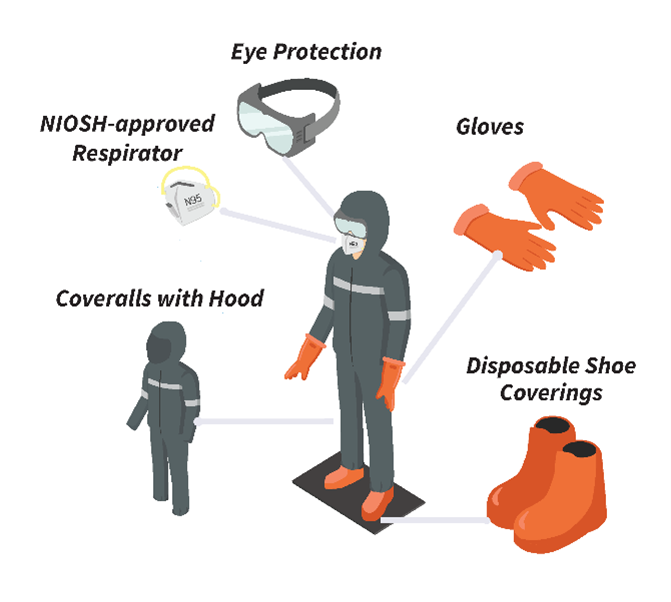Histoplasmosis in the Workplace
People who work in certain jobs are at risk for histoplasmosis. Histoplasmosis is an infection caused by Histoplasma, a fungus that lives in the soil. Anyone who works with or near material contaminated with the fungus can develop histoplasmosis. Most people who breathe in the fungus never have symptoms, but some people can develop severe histoplasmosis and get very sick. Employers and workers can take steps to prevent histoplasmosis in the workplace.

Certain job tasks can put workers at risk
Certain activities have risks for exposure to the fungus that causes histoplasmosis:
- Disturbance of large accumulations of bird or bat droppings (scraping droppings from a bridge; shoveling droppings from a building or other structure; cleaning a chicken coop)
- Soil disruption (digging or excavation)
- Plant matter disruption (handling trees or landscaping)
- Demolition, construction, or renovation
- Working in caves
In the United States, the fungus that causes histoplasmosis mainly lives in the central and eastern states, particularly areas around the Ohio and Mississippi River Valleys. Some people in areas where Histoplasma is common may have a higher chance of getting histoplasmosis, including people who work in:
- Construction and demolition
- Mining, quarrying, and oil and gas extraction
- Agriculture and forestry industries
Prevent histoplasmosis in the workplace
The best way to prevent exposure to the fungus that causes histoplasmosis is to prevent the accumulation of bird or bat droppings in the first place. This can be accomplished by excluding bats and birds from buildings. In some cases, large amounts of bird or bat droppings should be cleaned up by a professional company that specializes in handling hazardous waste.
Employers can help keep workers safe during high-risk activities
If workers must remove bat or bird droppings, or if construction, excavation, or demolition must be done in areas where Histoplasma is common, employers should:
- Develop a site safety plan to minimize workplace exposures. The plan should have input from management, employee representatives, and health and safety professionals.
- Reduce or eliminate dust. Spray water or use other dust suppression techniques.
- Dispose of any material that might be contaminated with Histoplasma safely while following state and local requirements.
- Post health risk warnings in areas known or suspected to be contaminated with Histoplasma.
- Train workers so they understand the potential risks and how to protect themselves.
- Provide personal protective equipment (PPE) and associated training to workers.
- Encourage workers with workplace exposures to Histoplasma or symptoms of histoplasmosis to seek a medical evaluation with a healthcare provider.

Workers can take steps to protect themselves
Workers should try to eliminate or reduce dust and can use PPE to protect themselves from exposures to Histoplasma. Disposable protective clothing and shoe coverings can help prevent spreading the fungus to other places like a worker’s car or home. Workers should talk to a crew leader or supervisor about selecting the appropriate PPE.
Workers who may have been exposed to Histoplasma at work or have symptoms of histoplasmosis should:
- Talk to a crew leader or supervisor and their Occupational Health or Risk Management Department
- Contact the local city, county, or state health department if their workplace does not have the above services
- See a healthcare provider for medical care
- Ask a healthcare provider about testing for histoplasmosis
More Information
